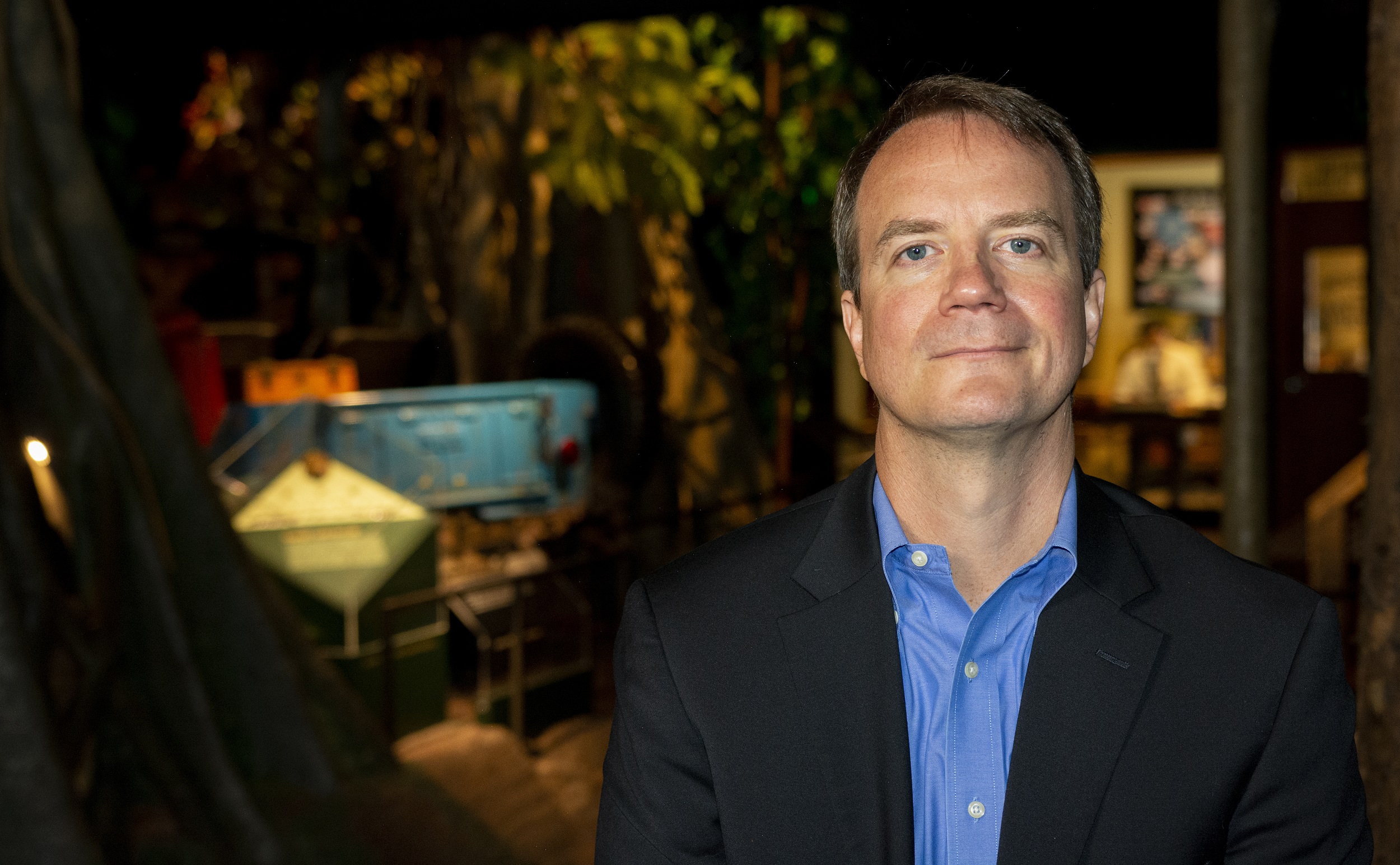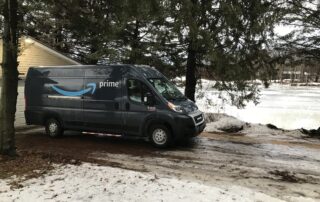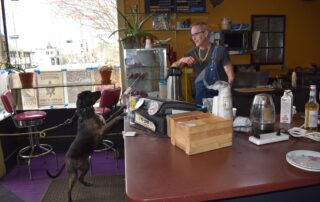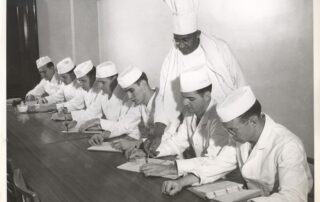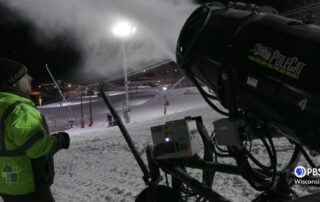Corey Jaskolski grew up in and around Milwaukee and loved visiting the Milwaukee Public Museum as a child.
“My mom took us there a lot as kids, in part, just to get the screaming kids out of the house. But also in part to show us a broader view of the world and guide us towards some of the important things — shared cultural and natural things — around us,” said Jaskolski.
“We didn’t didn’t travel as kids,” he remembered. “But the Milwaukee Public Museum to me, was this place where I could be an explorer, where I could see these animals that I only saw in books sort of come to life in front of me. It gave me this opportunity to think, well, maybe a little kid that wants to see the world and and wants to be an explorer and wants to travel to all the continents — maybe that’s actually possible.”
Now, Jaskolski, who still resides in the Milwaukee area and is the owner and founder of Synthetaic, credits Milwaukee Public Museum with inspiring him to pursue the work that has led to him being named the 2020 Rolex National Geographic Explorer Of The Year.
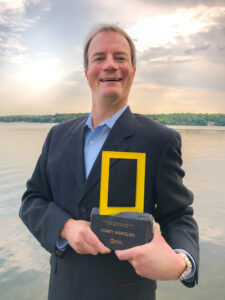
Corey Jaskolski with his 2020 Rolex National Geographic Explorer Of The Year Award (courtesy Milwaukee Public Museum)
“Milwaukee Public Museum, when I was a kid, was that avenue for me to be an explorer and to see things that I don’t think I would have been able to otherwise,” he said.
When Jaskolski enrolled at Massachusetts Institute of Technology to study electrical engineering, he expected to pursue a career with a big engineering firm like Boeing or Lockheed Martin. But he says he also developed a passion for video and photography around the same time. Because of that, he ended up working with National Geographic as Director of Technology.
“While working with Nat Geo and while being involved with them, I really realized that I didn’t have to sort of pick between one or the other,” he said. “I didn’t have to pick between photography and video and exploration and a traditional engineering sort of job role. I could actually combine them both and develop technologies for exploration and for trying to solve some of the really hard problems we face in humanity.”
In that role, Jaskolski has travelled to every corner of the planet and used cutting-edge Artificial Intelligence technology to explore some of the most amazing places on Earth.
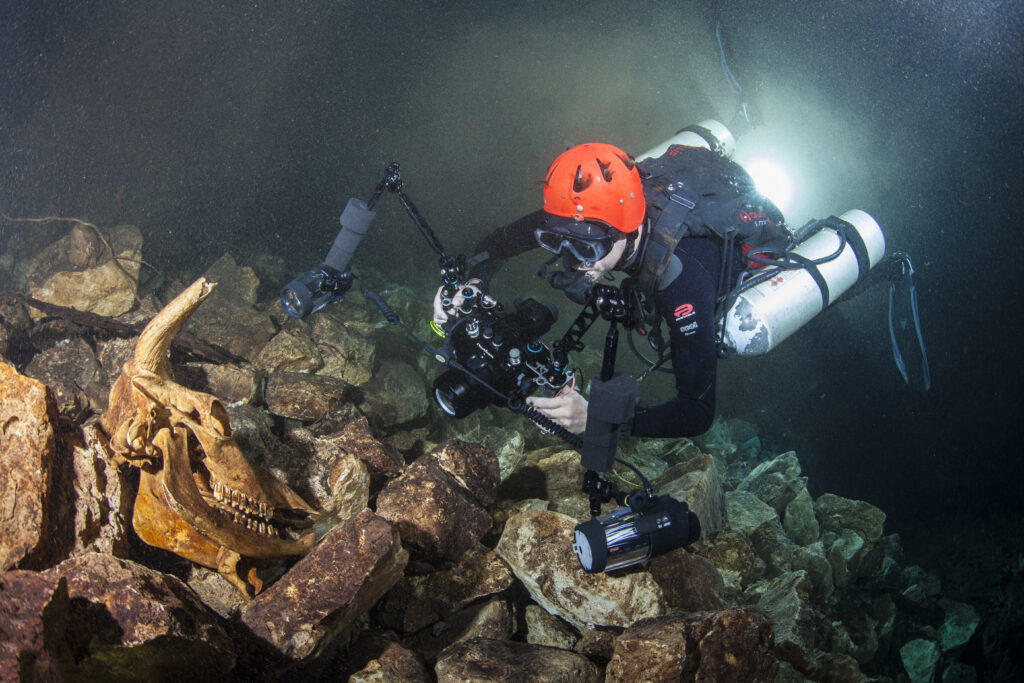
Corey Jaskolski photographs the skull of a cow in the depths of a Mexican Cenote. Ancient Mayans believed Cenotes were gateways to the underworld, and used them to make offerings and sacrifices to the gods. (courtesy Corey Jaskolski)
“From 12,500 deep on the Titanic to 26,000 feet helicoptering with laser scanners over Everest, I think we’ve covered a lot of land and a lot of ground and a lot of water,” he recalled. “We can use technology to be the eyes where we can’t go or use technology to monitor things where we can’t always be present.”
The possibility for technology to serve as a proxy has also led Jaskolski to projects focused on protecting endangered species.
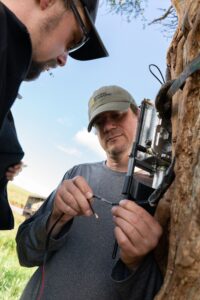
Corey Jaskolski (right) installs a trail camera on a tree in Kenya (courtesy Corey Jaskolski)
“A good example of it is if we have a camera trap, a traditional trail camera — that people use up here in the woods to see how many deer are going by their property — if we have a camera like that sitting out in a tree in Africa, we can actually have an A.I. system look at those images, understand what’s in those images, and send us alerts when something specific happens.”
“For example, if we’re looking for lions or poachers or elephants,” suggested Jaskolski. “Whereas, if we had four or five people that were going out looking for an endangered species, we could only do what we could keep four people awake for each and every night. But we can put hundreds of cameras out. It’s like “The Terminator.” They don’t eat, they don’t sleep. They just do their A.I. Job.”
Dr. Ellen Censky is President and CEO for Milwaukee Public Museum. She said Jaskolski is the perfect choice for 2020’s Rolex National Geographic’s Explorer Of The Year.
“He’s just somebody that you’re you’re drawn to because he’s so quiet and unassuming, but he’s done so much with his life,” she said. “How could you not name him Explorer of the Year?”
And Dr. Censky hopes Milwaukee Public Museum can continue to inspire Wisconsin children like it’s inspired Jaskolski.
“It just shows you how much these kinds of institutions in these communities, how they truly do impact people,” said Censky. “He’s not the only one who’s told us the way the exhibits take you on those adventures. It really gives you a sense of there is something more than what’s in my backyard.”
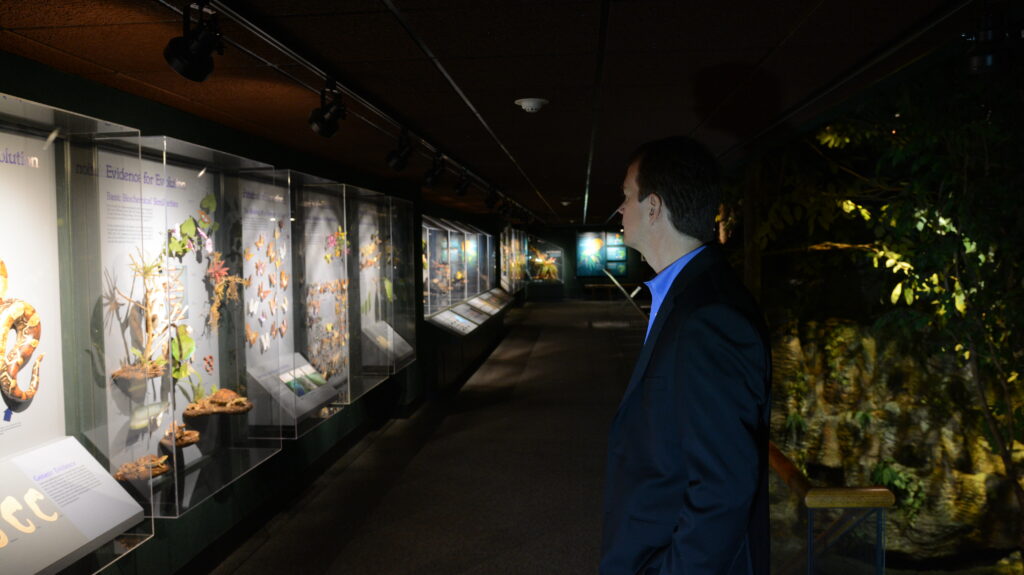
Corey Jaskolski browses exhibits at Milwaukee Public Museum (courtesy Milwaukee Public Museum)
“I would love to see a bunch of scientists come out of each crop of kids who come through because the more scientists we have in the world, the more problems are going to be solved in the world,” she said.
For Jaskolski, being named National Geographic’s 2020 Explorer Of The Year is a rare opportunity to reflect on his accomplishments.
“It’s a huge honor. It’s the culmination of an entire career worth of work,” he said. “When you’re out there doing this stuff, you don’t always think that what you’re doing is necessarily the most cutting edge, most impactful. You’re in the work, deep in the weeds, 3D scanning a Sumatran Rhino or diving on a submarine on Titanic. And you don’t really stop to think about the impact, the storytelling.”
“Winning the award was a chance to just step back and take a deep breath and realize all the things that I’ve been able to do and been fortunate enough to be able to contribute to,” concluded Jaskolski. “And, you know, it’s fuel for for what comes next. Definitely inspired me to keep going.”
